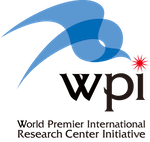Danny Hsu(Academia Sinica) Disentangle knotty protein problems through the lens of biophysics and structural biology
Naturally occurring amino acids have a common L-form backbone structure, making them intrinsically chiral when synthesized into proteins as polypeptide chains. Many proteins can spontaneously fold into intricate three dimensional structures through the formation of a network of hydrogen bonding, electrostatic and van der Waals interactions. In addition to the myriad of complex folding topologies that have been identified from the experimentally determined protein structures, proteins can even fold into topologically knotted conformations as defined by their inability to be stretched and disentangled into a linear chain when pulled from both ends. The mechanism by which proteins tie themselves into topological knots has been the focus of our research. We systematically surveyed the folding dynamics and kinetics of several knotted proteins with different knot types, ranging from the simplest 3_1 trefoil knot to the most complex 6_1 Stevedore’s knot. We also used biochemical tools to demonstrate the unprecedented mechanostability of a family of 5_2 Gordian knotted human ubiquitin C-terminal hydrolases (UCHs) that are closely associated with human diseases. Our findings indicated several characteristics of knotted proteins that are consistent with general polymer theories. The advent of AI-assisted protein structure predictions such as AlphaFold has revolutionized our ways of studying protein structure-function relationships. Several new protein knots have been predicted by AlphaFold, including the most complex 7_1 knot and a tandem repeat of 3_1 knot. I shall discuss our recent efforts in testing the predictive power of AlphaFold in the context of knotted proteins.


